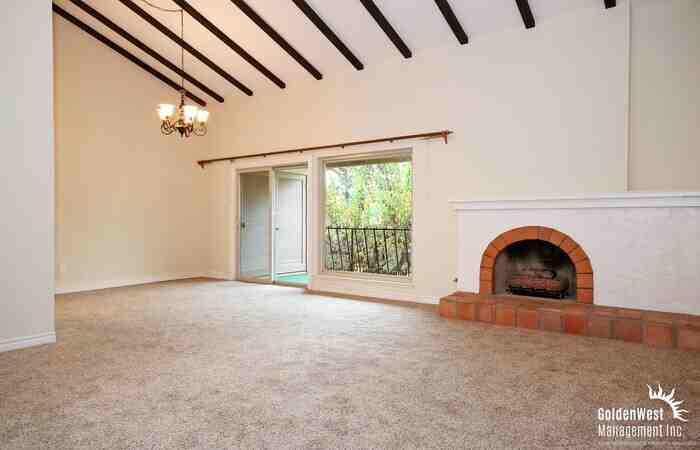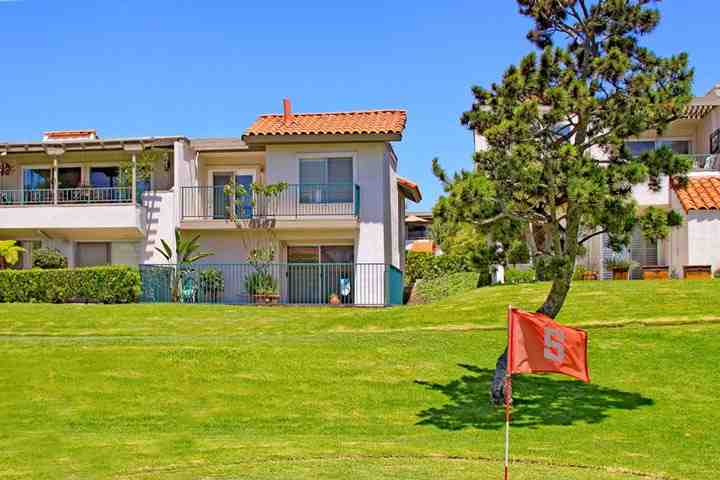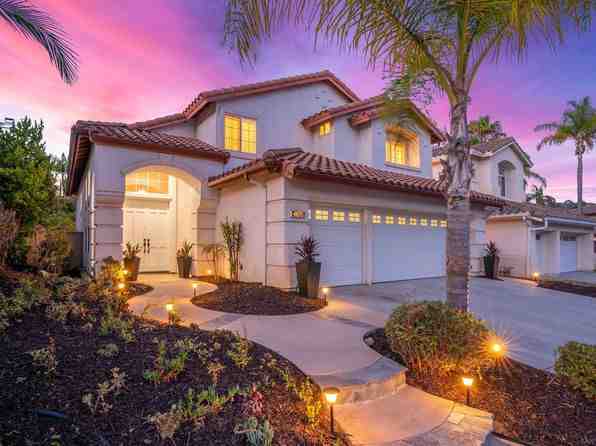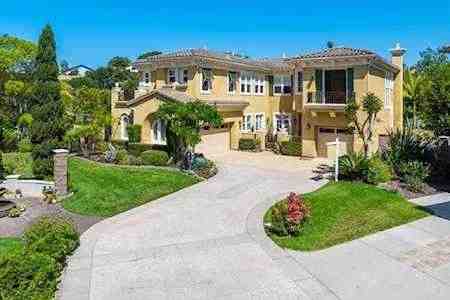ENCINITAS, CA — Looking for a home with lots of space? Check out this 5,001 square foot home in Encinitas.
Built in 2001, this upgraded home offers four bedrooms and five bathrooms. Features include a two-story living room with mezzanine library, gym, study, wine room, pool and spa, three-car garage and views overlooking the Encinitas Ranch Golf Course.
Interested in local real estate?Subscribe to Patch’s new newsletter to be the first to know about open houses, new listings and more.

Listed by: Patrick Galvin, Coldwell Banker West
For more real estate news, follow Patch on Facebook
Interested in local real estate?Subscribe to Patch’s new newsletter to be the first to know about open houses, new listings and more.

The rules of replying:
In general, mobile homes depreciate about 3-3.5% per year. Determining how much your manufactured home has depreciated can help you determine your home’s current value fairly accurately. For example, a house that originally cost $50,000 will be worth $41,000 after six years.
What is the difference between a manufactured home and a single-family home?

In most cases, family homes offer more living space than mobile homes. This difference is often minimized when you put manufactured homes in the mobile home category. Some manufactured homes may even offer more square footage of living space than smaller single-family homes.
Why Shouldn’t You Buy a Manufactured Home? The disadvantage of buying a mobile home is that its value will quickly decrease. Like a new car, once a mobile home leaves the factory, its value drops rapidly. On the other hand, log houses tend to increase in value over time because the owner almost always owns the land beneath the house.
What makes something a manufactured home?
Manufactured homes, sometimes called mobile homes or trailers, are homes that are completely factory-built and built on a fixed, steel chassis (rather than a permanent foundation).
What are the downsides of manufactured homes?
Against:
- Availability and price of suitable land.
- Additional costs imposed by the manufactured home community.
- Less choice and higher financing costs.
- Fewer options for personalization and convenience.
- The lingering stigma of mobile homes.
- Questionable long-term value; slower, if any, appreciation.
What is an example of a manufactured home?
Tiny homes measuring only about 400 square feet are an example of modern manufactured homes. They are usually manufactured off-site and transported to the property by flatbed truck.
What’s the difference between a manufactured home and a regular home?
Although various modern residential buildings are built entirely or partially off-site, manufactured homes refer to a specific type of home that is typically built in a factory and transported to its location on its own wheels.
What are the benefits of a manufactured home?
5 advantages of manufactured homes
- Affordable. Manufactured homes are generally less expensive compared to similarly sized homes, but the savings don’t stop there. …
- A friend of the environment. The negative impact on the environment is usually less with manufactured houses. …
- Reliable construction. …
- Flexibility.
What is the difference between a manufactured home and a traditional home?
Manufactured homes are built with the same materials as log homes and undergo a more stringent inspection process to ensure high-quality construction, offering the same or greater technological advancements to improve the functionality, aesthetics and efficiency of the home.
What are the cons of buying a manufactured home?
Against:
- Availability and price of suitable land.
- Additional costs imposed by the manufactured home community.
- Less choice and higher financing costs.
- Fewer options for personalization and convenience.
- The lingering stigma of mobile homes.
- Questionable long-term value; slower, if any, appreciation.
Why do manufactured homes not hold value?
Restrictive or unavailable financing, restrictive zoning, and the view that manufactured homes are not valued as much as site-built homes have limited this type of housing. A recent government report, however, found that manufactured homes could actually rise in price to levels similar to site-built homes.
Do manufactured homes last long?
In a report from the Manufactured Housing Institute, the life expectancy of a manufactured home is 55.8 years (mhvillage.com). With proper maintenance and upkeep, manufactured homes have an expected long lifespan, with the potential to last forever.
Do manufactured homes have insulation?

Are manufactured homes well insulated? They are! Manufactured homes must be insulated, and depending on the location of the manufactured home within the United States, they will adhere to different insulation standards.
What kind of insulation is used in manufactured homes? Glass plastic. Fiberglass insulation is an excellent choice for home insulation and is the most commonly used insulation in manufactured homes. It does not burn or rot. Fiberglass is actually a fiber-like material made from glass.
Do manufactured homes have good insulation?
Manufactured/mobile homes tend to have a lower level of insulation than site-built homes built in the same period. But HUD has increased insulation requirements over the years.
How thick are the walls of a manufactured home?
Manufactured home wall panels range in thickness from 5/16” to ½”. 5/16-inch thickness used to be the most popular gauge for paper-on-gypsum (POG) wallboard, but most new Clayton homes with POG wallboard are now 3/8-inch.
Are mobile homes not insulated?
The biggest problem in mobile homes is that they are insufficiently insulated. Mobile homes have little or no insulation in their walls, ceilings and underneath. They also have a reputation for being drafty and having unstable internal temperatures, making you and your family uncomfortable.
Are mobile homes not insulated?
The biggest problem in mobile homes is that they are insufficiently insulated. Mobile homes have little or no insulation in their walls, ceilings and underneath. They also have a reputation for being drafty and having unstable internal temperatures, making you and your family uncomfortable.
How can I make my mobile home more insulated?
Opt for blown or loose insulation: Blown or loose insulation consists of small particles of fiberglass, cellulose or mineral wool, which can fit into almost any inaccessible space, including oddly shaped spaces and spaces with obstructions.
What kind of insulation do mobile homes have?
Manufactured homes will have different standard insulation values as standard, depending on the manufacturer and series. However, you’ll typically find R-11 or R-13 the minimum standard in the floor, R-19 with 2â³ x 6â³ sidewalls, and R-22 in the roof.
What kind of insulation do mobile homes have?
Manufactured homes will have different standard insulation values as standard, depending on the manufacturer and series. However, you’ll typically find R-11 or R-13 the minimum standard in the floor, R-19 with 2â³ x 6â³ sidewalls, and R-22 in the roof.
What is the best way to insulate a mobile home?
Foam insulation is superior insulation that comes with a higher price tag, but it also creates an air seal that makes your mobile home more energy efficient and comfortable. Fiberglass is cheaper, so if you’re on a budget, this might be a better option for you.
What are the disadvantages of living in a mobile home?

The downsides of living in a mobile home
- Stigma. Will people think less of us? …
- It may drop in value. Mobile homes have traditionally been thought to depreciate in value, but this has not necessarily been the case in recent years.
- You may have to pay rent for the plot. …
- Financing is different from a traditional mortgage.
What is the downside of buying a manufactured home? Lender Requirements Some specific financing considerations surround manufactured homes. In some cases, they are considered personal property rather than real estate, and this can affect buyers’ plans and financing options. This can be one of the risks of buying a manufactured home.
Is there anything wrong with living in a mobile home?
Mobile homes can have a significantly lower value than traditional homes. Sometimes that can be a good thing and sometimes it can be a bad thing. In terms of taxes, this can mean that property taxes are also low. However, long-term home appreciation is often lower than it is for traditional homes.
What are some of the special dangers of mobile home living?
But they especially like to build their homes on any wet surfaces or damp places they can find. As a result, they can pose many health risks, such as asthma, eczema, upper and lower respiratory symptoms, and respiratory infections, to name a few. It is important to take steps to avoid them as much as possible.
Can living in a mobile home make you sick?
While trailers and mobile homes are well known to have excessive levels of off-gassing, a site-built home can also be toxic. Mass-built communities that appear seemingly overnight are likely to have high levels of formaldehyde toxicity.
Can mobile homes make you sick?
While trailers and mobile homes are well known to have excessive levels of off-gassing, a site-built home can also be toxic. Mass-built communities that appear seemingly overnight are likely to have high levels of formaldehyde toxicity.
When did they stop using formaldehyde in manufactured homes?
As of June 1, 2018, composite wood products are prohibited from being manufactured or imported into the United States if they contain excessive amounts of formaldehyde. This major improvement in consumer safety is the result of a lawsuit filed in October 2017.
Can old mobile homes make you sick?
Children can become more sensitive to formaldehyde, which can make them more likely to get sick. The elderly may be less able to tolerate high exposure to formaldehyde. If there are children or the elderly in your mobile home, it is important to reduce their exposure to formaldehyde.
What is the difference between modular and manufactured homes?
The main difference between manufactured and modular homes is that manufactured homes are built to the national HUD code, while modular homes are built to all applicable state and local building codes. This is similar to the way traditional site-built houses are built.
Is modular the same as manufactured? From a legal standpoint, the primary difference between modular and manufactured homes is that modular homes adhere to the same local, state, and regional building codes required for on-site homes, while manufactured homes adhere to a federal code set by the Department of Housing and Urban Development. (HUD).
Which is better a modular or manufactured home?
The primary advantages of modular construction over site-built construction is that modular construction has stricter quality control. Every component of every home is manufactured exactly the same way every time, and the results of every process are checked many times before the home leaves the factory.
What is the difference between manufactured and modular?
Manufactured homes are built in one controlled environment and then transported to the home location. Red HUD certification stickers are affixed to the exterior. Modular homes are built in accordance with local and state safety regulations depending on the destination.
Whats better modular or manufactured?
Relative Home Cost It’s true that manufactured homes are generally less expensive, but a wider range of modular home mortgage options could offer qualified borrowers a faster and easier way to get into a modular home, with more lending options and easier loan processing.
What the difference between a modular home and a double wide?
Both mobile homes and manufactured homes are prefabricated structures, built in a factory on a permanently attached chassis before being transported to the site. A modular home, on the other hand, is built to the same local, county, and state building codes as a site-built home.
What is the difference between modular and double wide?
Modular Homes The differences between a modular home and a double-wide home can therefore be seen in the foundation. Unlike the steel frame trailer that is mostly used for double widths, a modular home will always be placed on a foundation. Construction is also done in parts and then moved to a location of your choice.
Is a double wide the same as a manufactured home?
They can only have 400 square meters of living space inside. Eligible homes will be considered “double-wide” and will be no less than 20 feet wide and have at least 600 square feet of living space inside.







